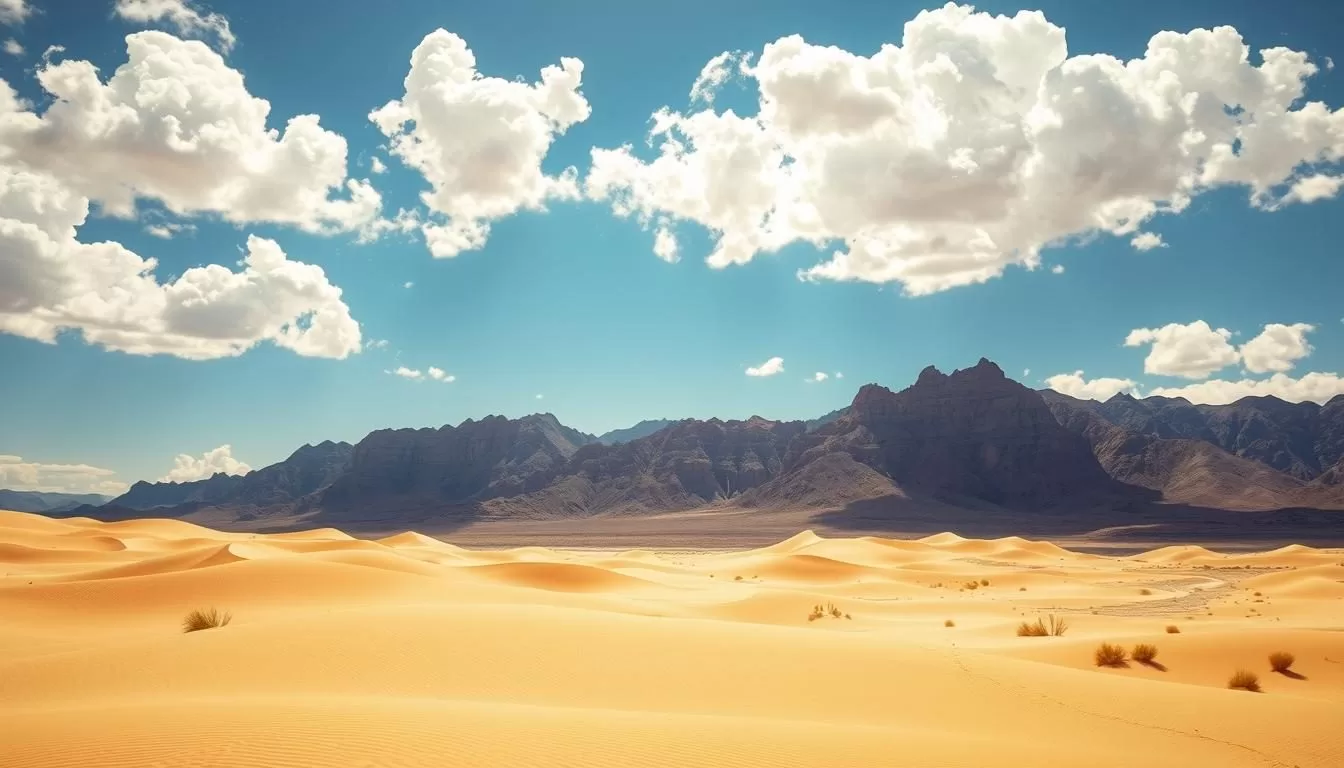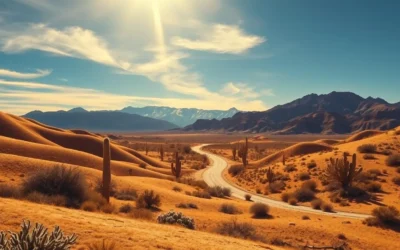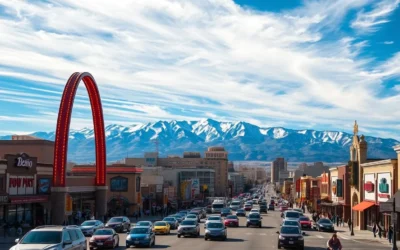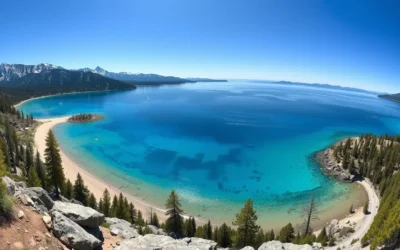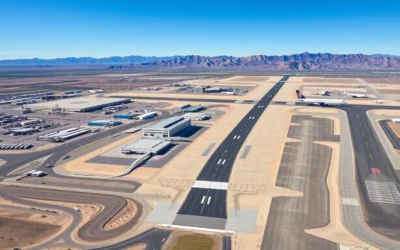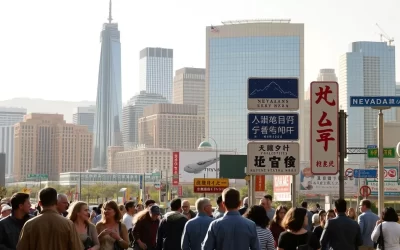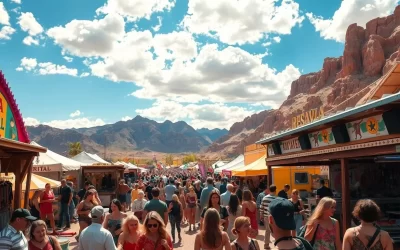Planning a trip to Nevada can be a thrilling experience, especially when you’re aware of the best times to visit. Whether you’re looking to explore the vibrant city life of Las Vegas or enjoy the serene landscapes of Lake Tahoe, understanding the local weather patterns is crucial.
Nevada’s diverse geography, ranging from desert landscapes to mountain regions, offers a unique experience throughout the year. You’re in for a treat, whether you’re seeking the best time for outdoor activities or simply want to enjoy the state’s scenic beauty. This guide will help you navigate the state’s four distinct seasons and identify the best times to visit based on your preferences.
By the end of this guide, you’ll be well-equipped to plan your trip to this incredible destination, ensuring that your experience is nothing short of exceptional.
Understanding Nevada’s Diverse Climate
As you travel across Nevada, you’ll encounter a variety of weather conditions that reflect the state’s diverse geography. The state’s climate ranges from the scorching hot deserts in the south to the alpine environments in the north.
Desert Landscapes and Mountain Regions
Nevada’s diverse landscapes play a significant role in shaping its climate. The state’s desert regions, such as the Las Vegas Valley, experience extreme heat during the summer season, with temperatures often exceeding 100°F (38°C). In contrast, the mountainous regions, like Lake Tahoe, receive heavy snowfall during the winter, with averages exceeding 400 inches annually.
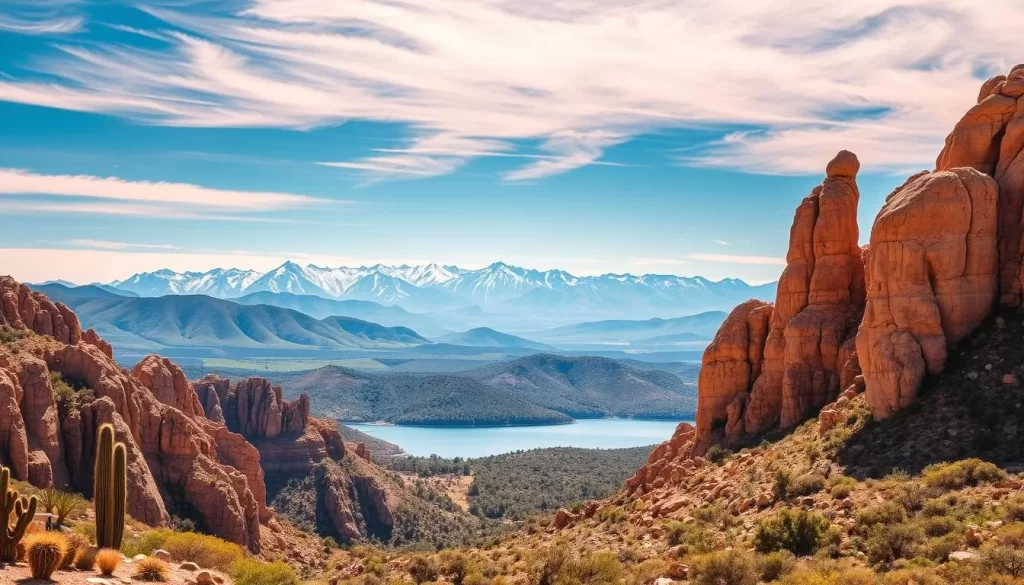
Regional Weather Variations Across the State
The conditions in Nevada vary significantly across different regions. For instance, Las Vegas and southern Nevada typically experience temperatures 15-20°F higher than Reno and northern Nevada throughout the year. The state’s diverse geography creates a range of microclimates, making each place unique. Some key regional variations include:
- Las Vegas Valley: extreme heat in summer, mild winters
- Northern Nevada: moderate summers, cold winters with snowfall
- Lake Tahoe: heavy winter snowfall, mild summers
- Eastern Nevada’s Great Basin: extreme temperature swings
Understanding these regional differences is crucial for planning your trip to Nevada.
Nevada’s Four Distinct Seasons: What to Expect
As you plan your trip to Nevada, it’s essential to know what to expect from the state’s four distinct seasons. Nevada’s climate varies significantly, offering a range of experiences for visitors throughout the year.
Summer: Scorching Desert Heat
Summer in Nevada is characterized by scorching desert heat, particularly in the southern regions. Temperatures soar, making it essential to plan your activities accordingly. If you’re visiting during this time, be prepared for the heat.
Fall: The Golden Transition
Fall brings a welcome change to Nevada’s climate, with temperatures gradually cooling down after the summer heat. The weather becomes more pleasant, making it an ideal time for outdoor activities and exploration.
Winter: From Mild Valleys to Snowy Mountains
Winters in Nevada vary from mild in the valleys to snowy in the mountains. This season offers a unique experience, with opportunities for skiing and other winter sports in the higher elevations.
Spring: Wildflowers and Moderate Temperatures
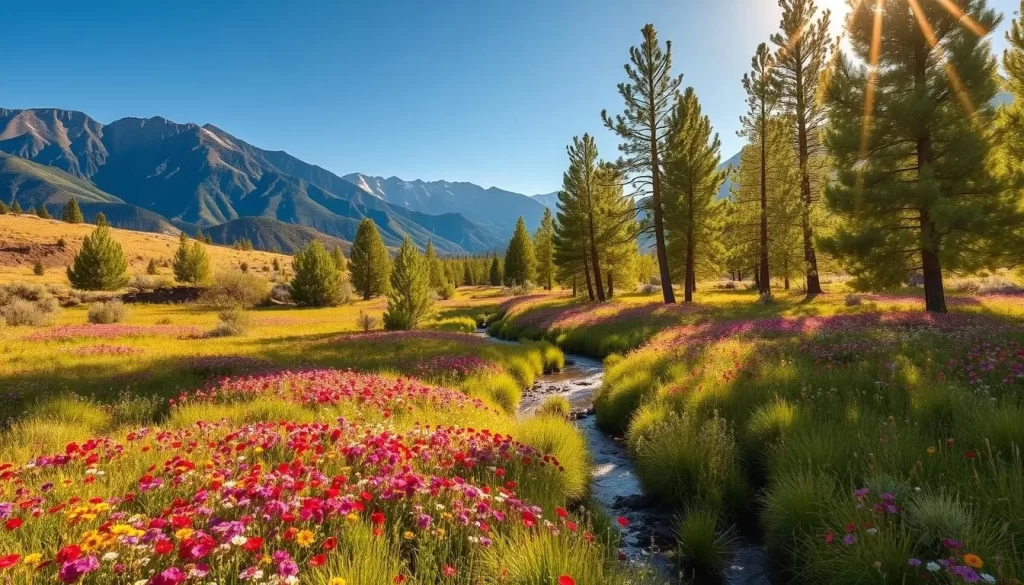 time to visit Nevada, with moderate temperatures and the blooming of wildflowers. In Las Vegas, spring brings pleasant weather, with highs reaching 71°F (22°C) in March, 77°F (25°C) in April, and 91°F (32°C) in May. The gradual warming of temperatures makes it ideal for outdoor activities.
time to visit Nevada, with moderate temperatures and the blooming of wildflowers. In Las Vegas, spring brings pleasant weather, with highs reaching 71°F (22°C) in March, 77°F (25°C) in April, and 91°F (32°C) in May. The gradual warming of temperatures makes it ideal for outdoor activities.
During spring, you can enjoy the desert landscapes coming alive with colorful blooms, particularly in years with sufficient winter rainfall. While the spring weather can be somewhat unpredictable, with occasional wind storms and lingering snow showers in the mountains, it’s generally a pleasant season to explore Nevada.
Summer in Nevada: June to August
Summer in Nevada is not just about the heat; it’s a season filled with unique experiences and attractions that make it worth braving the high temperatures. Whether you’re looking for relaxation or adventure, Nevada has something to offer during the summer months.
Dealing with Desert Heat in Las Vegas and Southern Nevada
Las Vegas, being a major tourist destination, is well-equipped to handle the summer heat. Hotels offer special deals, making it an attractive option for budget-conscious travelers. To stay cool, you can alternate between enjoying the pool and indoor air-conditioned spaces. This way, you can enjoy the best of both worlds without feeling overwhelmed by the desert heat.
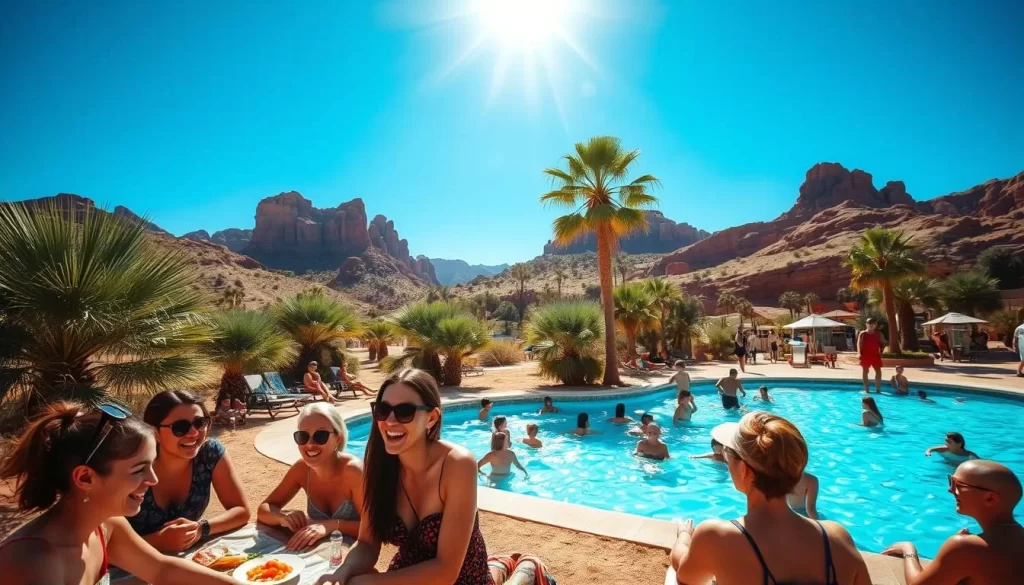
Summer Activities and Events Worth the Heat
Nevada’s summer is filled with a variety of activities and events that cater to different interests. You can enjoy water activities at Lake Tahoe, including swimming, boating, paddleboarding, and kayaking in the crystal-clear alpine waters. The state also hosts numerous summer concert series, such as Harvey’s Summer Concert Series and Truckee Thursdays, which feature live music performances.
Some other notable events include the Lake Tahoe Shakespeare Festival, which brings Shakespeare’s tales to life against the stunning backdrop of Lake Tahoe, and Independence Day celebrations, which are particularly spectacular in Nevada. You can also explore various activities like visiting world-famous “dayclub” venues in Las Vegas, which feature top DJs and lively atmospheres every weekend.
- Enjoy pool parties at their peak in Las Vegas during the summer months.
- Experience the scenic beauty of Lake Tahoe through various water activities.
- Attend outdoor concerts and festivals, such as Harvey’s Summer Concert Series.
Fall in Nevada: September to November
Fall in Nevada is a time of transition, marked by comfortable temperatures and a rich calendar of events. As the scorching summer heat dissipates, the state transforms into an ideal destination for those seeking to enjoy the outdoors and immerse themselves in local culture.
Perfect Weather for Outdoor Exploration
The fall season brings pleasant weather to Nevada, making it an excellent time for outdoor activities such as hiking, biking, and exploring the state’s natural beauty. With moderate temperatures ranging from the 60s to 70s Fahrenheit, you can enjoy comfortable conditions for a wide range of pursuits.
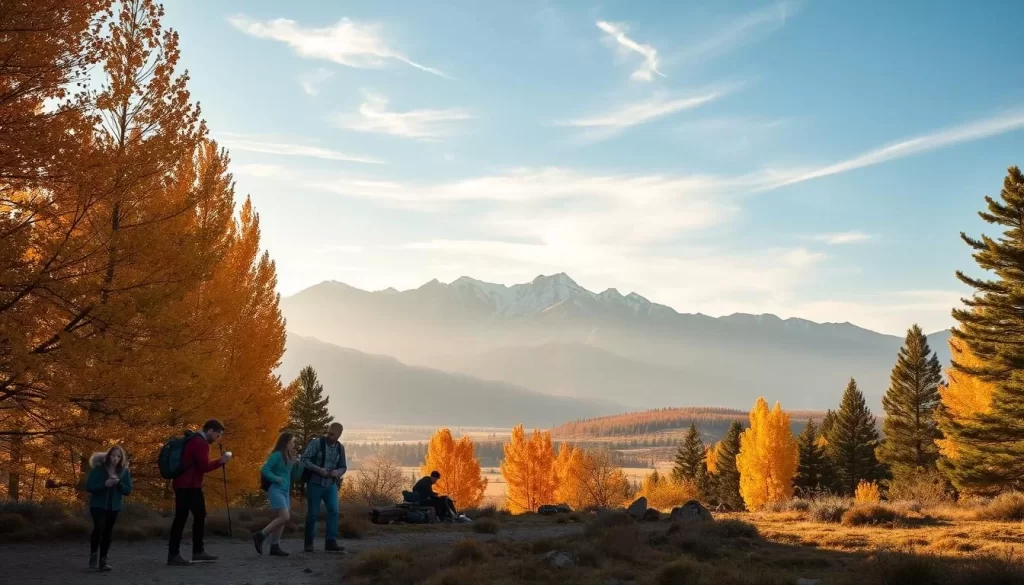
Fall Festivals and Cultural Events
Nevada’s fall calendar is filled with numerous festivals and events that celebrate the harvest season, local culture, and the pleasant weather. You can experience the Lake Tahoe Autumn Food & Wine Festival in September, featuring cooking classes, wine tastings, and outdoor adventures. October brings Oktoberfest celebrations to various locations, including Camp Richardson’s Annual Lake Tahoe Oktoberfest, with authentic German food, beer, and music.
Other notable events include Halloween celebrations in Las Vegas and Virginia City’s ghostly tours, art festivals like the Las Vegas Book Festival, and Native American cultural celebrations offering traditional dances, crafts, and foods. You can also visit local farms and vineyards for family-friendly activities like pumpkin patches and apple picking.
Winter in Nevada: December to February
As winter descends on Nevada, the state transforms into a playground for outdoor enthusiasts and those seeking comfort in warm casinos. The diverse geography of Nevada means that the winter experience varies greatly depending on the region.
Las Vegas Winter Experience: Mild and Comfortable
In Las Vegas, winter is characterized by mild temperatures, making it an ideal time to enjoy outdoor activities without the intense heat of the summer. You can enjoy a stroll along the Strip, visit the various attractions, or take a short trip to the nearby natural attractions. The mild winter weather also makes it a great time for outdoor adventures such as hiking or visiting the Hoover Dam.
Lake Tahoe and Northern Nevada: Winter Wonderland
Lake Tahoe and Northern Nevada, on the other hand, are transformed into a winter wonderland, with heavy snowfall creating perfect conditions for skiing, snowboarding, and other snow activities. Resorts like Heavenly, Mt. Rose, and Diamond Peak offer world-class skiing and snowboarding. The region’s adventure opportunities extend beyond downhill skiing to include snowshoeing, cross-country skiing, and snowmobiling.
The average snowfall in the Lake Tahoe area is between 300-500 inches annually, ensuring a robust winter experience for enthusiasts. Even non-skiers can enjoy the winter landscape with activities like scenic gondola rides and après-ski dining. The contrast between the snow-covered mountains and the deep blue of Lake Tahoe creates breathtaking landscapes that are a photographer’s dream.
Spring in Nevada: March to May
As spring unfolds in Nevada, the state transforms into a vibrant destination with a mix of natural beauty and exciting events. You can experience the state’s diverse landscapes and climates during this season, making it an ideal time to visit.
Wildflower Season and Natural Beauty
Spring brings a burst of color to Nevada’s landscapes as wildflowers bloom across the state. You can witness the vibrant colors and enjoy the moderate temperatures, making it perfect for outdoor activities like hiking and exploring. The wildflower season is a significant attraction, with various species blooming in different regions.
Spring Break Considerations and Events
During spring, Nevada, particularly Las Vegas, experiences a surge in tourism due to spring break. You can expect large crowds and higher prices during March and early April. However, if you visit in late April or early May, you can enjoy a more relaxed experience with pleasant weather. The spring break vibe is characterized by pool parties, concerts, and a lively nightlife. You can also participate in various events and activities, such as the Reno Jazz Festival, Great Vegas Festival of Beer, and outdoor concerts.
When planning your trip, consider that spring break brings significant crowds and higher prices. To avoid the chaos, plan your visit during the later part of the season. You can enjoy family-friendly activities, including Easter events at major resorts and outdoor festivals designed for all ages.
Nevada, United States: Best Months for a Weather-Savvy Trip
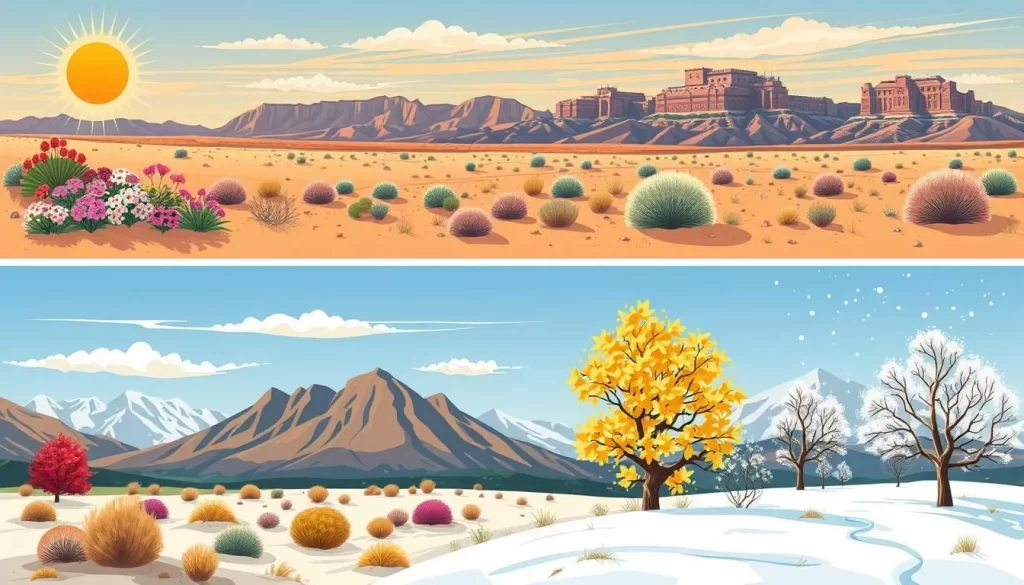
Nevada’s diverse climate means that the best time to visit varies depending on your preferences and activities. The state’s weather conditions range from scorching desert heat to snowy mountain peaks, making it essential to plan your trip accordingly.
Late April to Mid-May: The Sweet Spot
Late April to mid-May is considered one of the best times to visit Nevada, with mild temperatures and vibrant wildflowers. This period is ideal for outdoor activities like hiking and golfing, as the weather is neither too hot nor too cold.
September to October: The Second Prime Season
Another excellent period to visit Nevada is from September to October. The summer heat has dissipated, and the temperatures are comfortable, making it perfect for exploring the state’s natural beauty and enjoying outdoor events.
Weather Considerations for Special Interests
Your special interests should guide your timing when planning a Nevada trip. For instance, golf enthusiasts will appreciate the moderate temperatures in spring (April-May) and fall (September-October). If you’re interested in winter sports, plan your visit to Lake Tahoe between December and March for optimal snowfall and ski resort operations.
Whether you’re interested in water activities, hiking, or photography, Nevada has something to offer in every season. By aligning your visit with your preferred activities and considering the state’s climate variations, you can make the most of your trip.
Death Valley National Park: Timing Your Visit
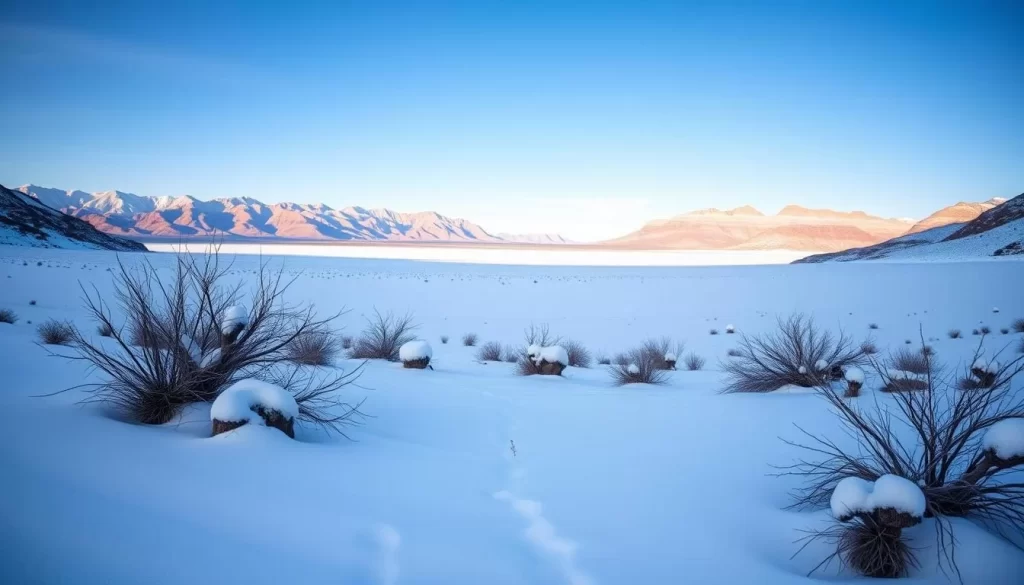
When planning a trip to Death Valley National Park, timing is everything. The park’s extreme climate means that the best time to visit depends on your preferences and what you want to experience.
Avoiding Extreme Heat: Spring and Fall Windows
While summer is scorching hot, spring (March to May) and fall (September to November) offer more moderate temperatures, making them ideal for outdoor activities like hiking and exploring the park’s unique landscapes. During these periods, the weather is generally mild, allowing visitors to enjoy the park’s natural beauty without the extreme heat.
Winter Visits: Comfortable Daytime Exploration
Winter is an excellent time to visit Death Valley, with daytime temperatures averaging 60°F to 70°F. While nights can be chilly, the mild daytime weather is ideal for outdoor activities like hiking and photography. Areas like Furnace Creek offer a pleasant base for exploring the park’s wonders. Winter’s moderate humidity levels create a comfortable atmosphere, unlike the dry heat of summer.
- Winter presents a surprisingly excellent time to visit Death Valley, offering comfortable daytime temperatures and unique perspectives on this extreme landscape.
- You’ll experience daytime highs typically ranging from 60-70°F (15-21°C) from December through February, ideal for hiking and photography without the heat concerns of other seasons.
- Night temperatures can drop into the 30s°F (0-4°C), so packing layers is essential if you’re camping or planning early morning or evening activities.
- The low winter sun creates dramatic shadows and lighting conditions that photographers particularly prize, especially in the late afternoon when the mountains glow with warm colors.
- Clear winter nights offer exceptional stargazing opportunities, as Death Valley’s designation as an International Dark Sky Park ensures minimal light pollution for observing the night sky.
Lake Tahoe Region: Seasonal Planning Guide
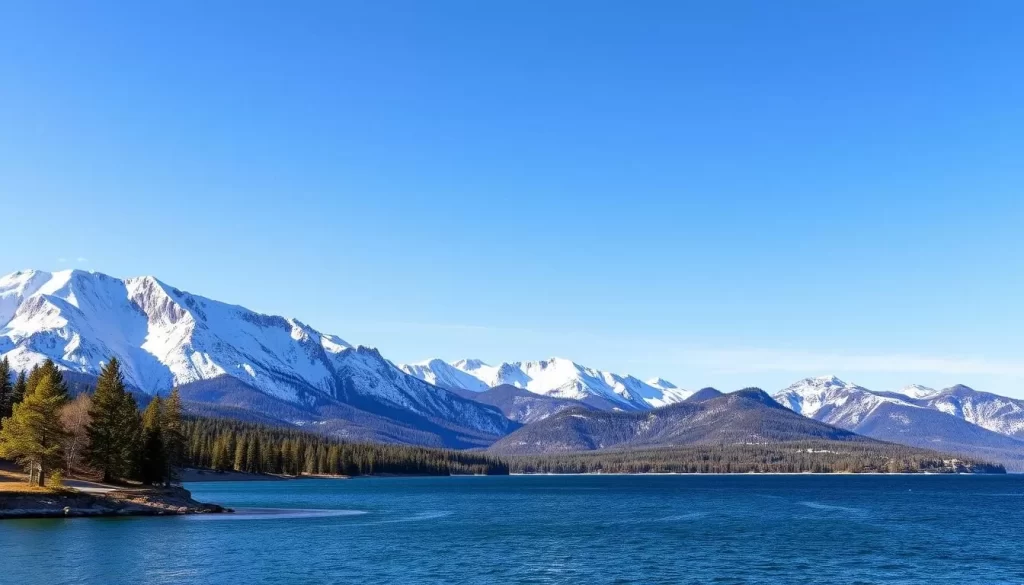
The Lake Tahoe region transforms with the seasons, offering unique experiences that cater to various interests. Whether you’re looking for outdoor adventures or simply want to enjoy the natural beauty of the area, understanding the seasonal dynamics is key to planning your trip.
Summer Lake Activities: June to August
Summer is a peak season at Lake Tahoe, with warm weather ideal for water sports like kayaking, paddleboarding, and boating. The clear waters and sandy beaches make it a perfect destination for families and outdoor enthusiasts.
Winter Sports Season: December to March
Winter turns Lake Tahoe into a snow sports paradise, with world-class skiing and snowboarding at resorts like Squaw Valley and Heavenly. The snow-covered landscapes also offer opportunities for snowshoeing and ice skating.
Shoulder Seasons: Value and Tranquility
During the shoulder seasons of spring (April-May) and fall (September-October), you can enjoy a more tranquil experience with fewer crowds. Hotel rates drop dramatically, often 30-50% lower than peak periods, making it a budget-friendly time to visit. The spring season brings the unique experience of seeing snow-capped mountains alongside warm days, while fall offers spectacular foliage as aspens turn golden.
Visiting during these shoulder seasons allows for a more peaceful enjoyment of the lake’s natural beauty and surrounding attractions, with prices being more reasonable. It’s an ideal time to explore hiking trails, enjoy outdoor activities without the peak season rush, and experience the local amenities without long waits.
Budget-Friendly Travel Periods in Nevada
Timing is everything when it comes to budget-friendly travel to Nevada. Understanding the fluctuations in prices and demand can significantly impact the cost of your trip.
To save on your Nevada vacation, consider traveling during off-peak periods. January and late fall are particularly good times to find deals, as they fall outside the peak tourist seasons.
Off-Peak Savings: January and Late Fall
Visiting Nevada in January or during late fall can offer substantial savings. Hotel rates tend to be lower, and you’ll often find discounts on packages that include attractions and shows. For instance, you can enjoy the natural beauty of Nevada without the crowds, making your trip more peaceful and enjoyable.
Additionally, January is a great time to explore indoor attractions like museums and entertainment venues in cities like Las Vegas. Late fall also provides comfortable weather for outdoor activities, such as hiking or visiting national parks, without the summer heat.
Midweek vs. Weekend Pricing Strategies
Another effective way to save on your Nevada trip is by being strategic about the days of the week you travel. Midweek stays are generally cheaper than weekend stays, particularly in Las Vegas.
- Hotel rates in Las Vegas are typically 50-70% lower from Sunday through Thursday compared to Friday and Saturday nights.
- This pricing pattern allows for significant savings by structuring your trip to include more weekday nights.
- The midweek advantage extends beyond accommodations to include better availability and sometimes special pricing for shows, restaurants, and attractions.
- Northern Nevada follows similar patterns, offering noticeable savings for midweek travelers, though with less extreme price swings.
- Combining midweek stays with off-peak season timing can potentially save you hundreds of dollars on a typical Nevada vacation.
By being mindful of the time you visit and planning your trip accordingly, you can enjoy Nevada while keeping your expenses in check.
What to Pack for Nevada’s Variable Climate
To make the most of your Nevada adventure, you’ll need to prepare for the state’s unpredictable weather conditions. The state’s diverse climate means that temperatures can fluctuate dramatically between days and nights, requiring a thoughtful approach to packing.
Layered clothing is essential, even in winter. Pack lightweight, breathable fabrics for daytime and warmer layers for cooler evenings. This strategy will help you adjust to the changing temperatures throughout the day.
Desert Essentials: Year-Round Must-Haves
Nevada’s desert climate creates significant temperature fluctuations that make strategic layering essential for comfort throughout your trip. You’ll need to pack clothing that can be adjusted throughout the day to accommodate the temperature swings of 30°F or more between day and night.
Seasonal Packing Lists
The base layer should focus on moisture-wicking fabrics that keep you comfortable in both hot and cool conditions. Mid-layers provide insulation when needed and should be easy to add or remove as temperatures change.
Layering Strategies for Temperature Fluctuations
For mountain regions like Lake Tahoe, the layering principle becomes even more crucial as elevation changes can create multiple climate zones in a single day of exploration. An outer shell or jacket that blocks wind becomes particularly important in spring and fall when sudden breezes can make temperatures feel significantly cooler.
| Season | Clothing Essentials | Layering Strategies |
|---|---|---|
| Spring | Lightweight jackets, breathable tops | Layering for temperature fluctuations |
| Summer | Shorts, t-shirts, sun protection | Minimal layering, focus on breathable fabrics |
| Fall | Layered clothing, warm sweaters | Layering for temperature fluctuations |
| Winter | Warm coats, insulated layers | Layering for cold weather |
Conclusion: Planning Your Weather-Perfect Nevada Adventure
Nevada’s unique blend of desert and mountain climates means that the right time to visit can make all the difference in your trip. By considering the state’s diverse regional weather patterns and distinct seasonal variations, you can tailor your adventure to your preferences and interests.
As you’ve learned, late April to mid-May and September to October offer the most consistently pleasant weather throughout the state, ideal for outdoor activities. However, the dramatic contrast between Nevada’s desert south and alpine north allows you to experience different climates and activities within the same trip, from the Las Vegas heat to Lake Tahoe snow.
Your specific interests should guide your timing decisions, whether that’s catching wildflower blooms in spring, enjoying water activities in summer, witnessing fall colors, or embracing winter sports. By planning your travel wisely and packing appropriately with layers, you’ll be able to focus on enjoying Nevada’s diverse attractions and creating an unforgettable experience.
With this comprehensive guide, you’re now equipped to plan a weather-savvy Nevada trip that aligns perfectly with your preferences, interests, and comfort level, ensuring an unforgettable Silver State adventure.
The above is subject to change.
Check back often to TRAVEL.COM for the latest travel tips and deals.
Here are some Tours & Sightseeing suggestions that might pique your interests!
